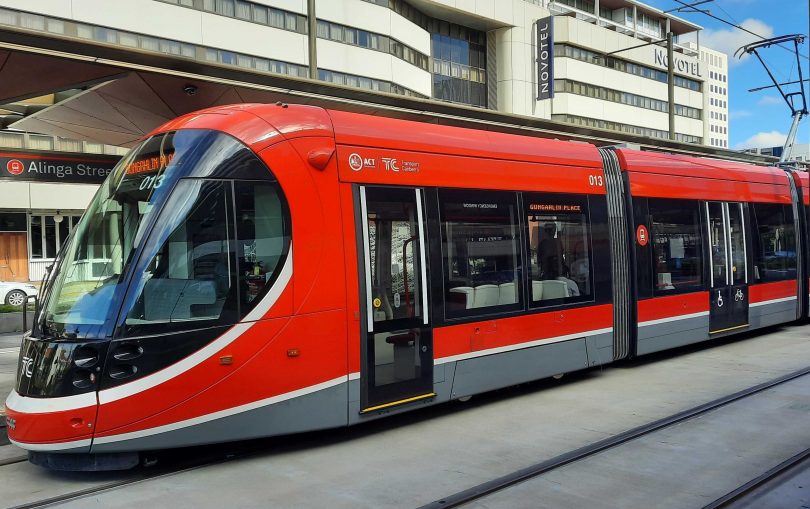
Infrastructure projects such as the next stage of light rail may face delays, says Standard and Poor’s. Photo: File.
The ACT Government’s economic credentials have again been given the thumbs up with international credit rating agency Standard and Poor’s (S&P) reaffirming its AAA credit rating.
It’s the second time this year that Standard & Poor’s has affirmed the government’s credit rating at “AAA/A-1+’ Ratings Affirmed; Outlook Negative”.
The ACT’s rating is the highest awarded by Standard & Poor’s, and the ACT remains the only Australian state or territory, and the only sub-national government in the Asia Pacific, with a AAA rating.
Chief Minister Andrew Barr said the decision from the credit rating agency recognised the ACT’s strong economic management and recovery plans during one of the biggest economic shocks in the national capital’s history.
“In October we released the 2021-22 Budget which set out our economic plan. We injected much-needed support into our economy to protect jobs, support our most vulnerable and invest in a pipeline of sustainable city-shaping infrastructure,” he said.
“The ACT Government is committed to our plan, supporting the growth of our economy over the coming decade. We have an ambitious target of 250,000 secure local jobs by 2025.”
The reaffirmed rating comes despite a deteriorating budget position, with the bottom line blowing out to nearly $1 billion in the red, but Standard & Poor’s said the ACT’s very high rates of vaccination were expected to help the ACT’s operating balance revert to surplus relatively quickly.
“Our rating on the ACT reflects its excellent financial management; very high-income economy, which relies on the public sector and tends to outperform most peers; and exceptional level of liquidity,” Standard & Poor’s said.
“The territory’s economy had rebounded strongly during fiscal 2021, leading to budgetary outturns considerably better than we previously expected. Australia’s excellent institutional framework also underpins the rating.”
But the ratings agency warns that delivering the government’s $5 billion infrastructure pipeline, including light rail, the Canberra Hospital Expansion and new schools, will be a challenge because governments across Australia are simultaneously endeavouring to ramp up their own infrastructure programs, hitting limits on industry capacity and skilled migration.
“As such, our forecasts assume under-delivery over the next three years,” Standard & Poor’s said.
It said the ACT had actually underspent on capital works, relative to its budget, by 22 per cent last fiscal year and 34 per cent the year before.
Standard & Poor’s was upbeat about the ACT budgetary position, saying that its own revenue and expense forecasts were more optimistic than the government’s.
The negative outlook reflects its view that there is at least a one-in-three chance that the ACT’s fiscal recovery will underperform its forecasts.
Standard and Poor’s does not mention the shadow on the horizon, the new Omicron COVID-19 variant, but it is too early to tell what impact it may have.




















